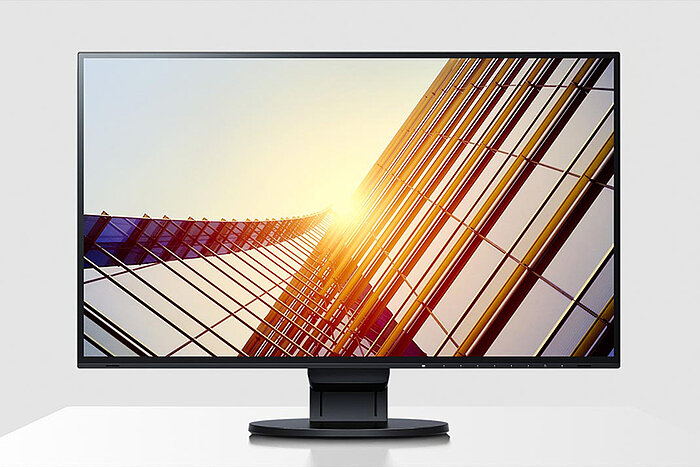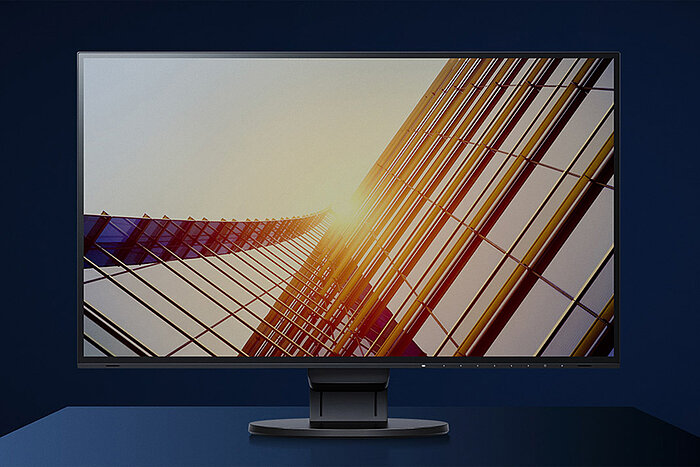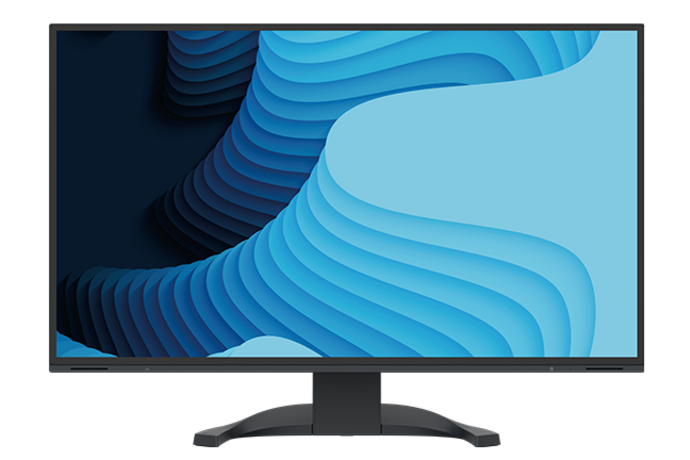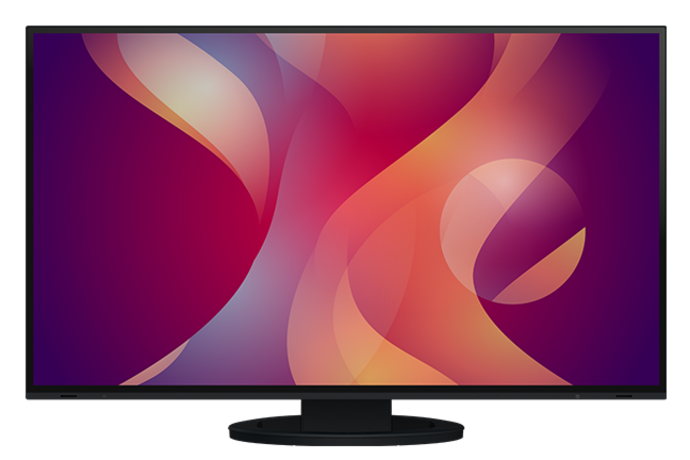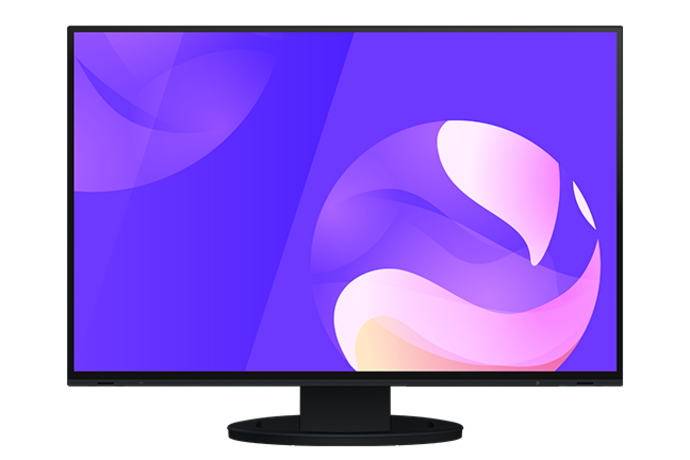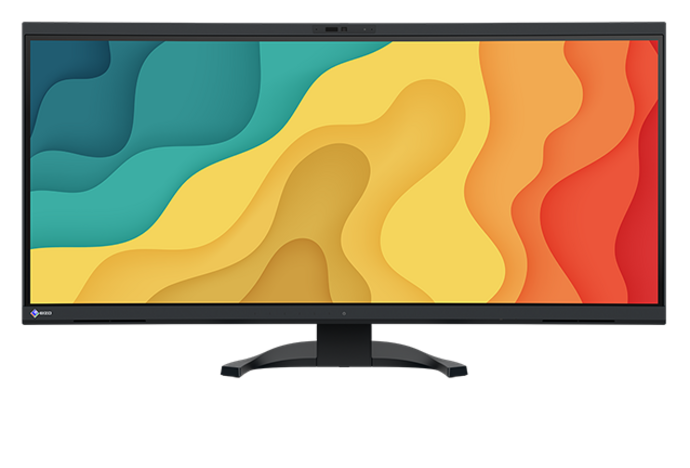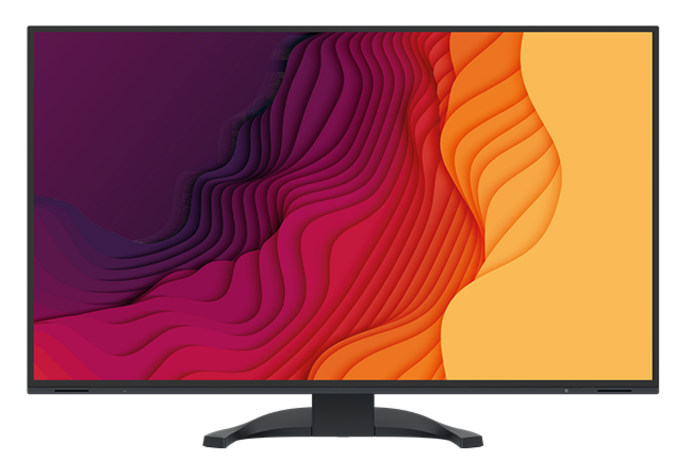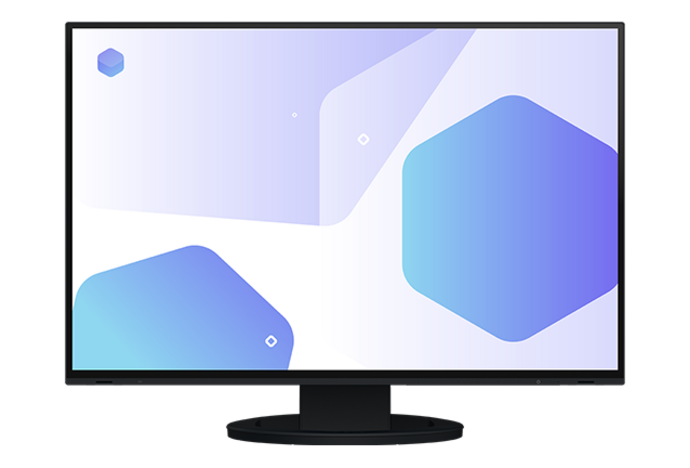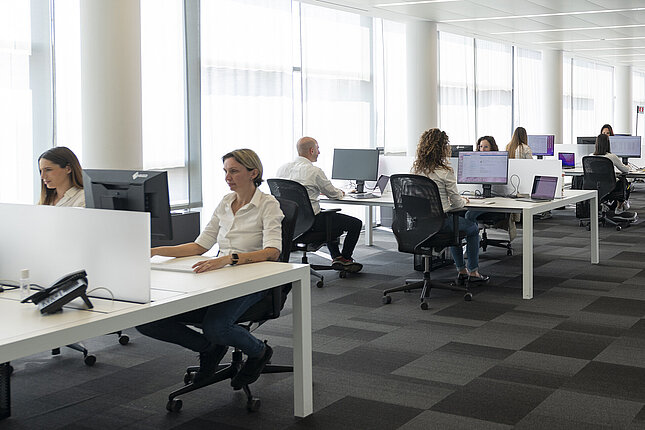Eye fatigue is one of the most common complaints when working at a monitor. EIZO therefore develops technologies that not only provide razor-sharp images, but also relieve your eyes in the long term. Find out how you can prevent eye fatigue with the right monitor functions and supplementary measures and thus increase your performance at the VDU workstation.
EIZO Academy
Preventing eye fatigue at computer workstations
Protect your eyes with the right monitor functions and additional measures.

For relaxed vision in any light
Easy on the eyes with Auto EcoView
Whether in daylight, at dusk or at night - the Auto EcoView function ensures optimum screen brightness at all times. An integrated sensor continuously measures the ambient light and automatically adjusts the brightness of the monitor. This effectively reduces annoying glare and is easy on the eyes - even during long periods of work. The intelligent two-point control takes into account both the brightest and darkest light conditions during the course of the day and ensures that the screen brightness always remains comfortable. The result: less eye fatigue and more visual comfort.
An automatic control circuit reacts dynamically to changing light conditions in the office and adjusts the brightness without manual intervention. If you still want to do it yourself, you can make the settings manually - supported by the EcoView Index, which provides guidance on energy efficiency.
Hybrid technology from EIZO
Flicker-free display
It should go without saying that a monitor image should be flicker-free. Flickering on a monitor can occur at low screen brightness due to the LED backlighting. Although we are barely aware of it, it is nevertheless a strain on our eyes and causes us to tire quickly when working on a screen.
A monitor becomes flicker-free when the brightness of its backlight is controlled in such a way that no flickering occurs that is perceptible to the human eye. EIZO achieves this through an innovative hybrid technology that combines two common methods: pulse width modulation (PWM) and direct current dimming (DC). While PWM is used at low brightness and works with particularly high frequencies to minimize flickering, DC dimming is used at higher brightness, which enables a stable colour display. This combination ensures an eye-friendly, flicker-free viewing experience - even at very low brightness levels below 1% of the maximum value. This puts less strain on the eyes, which is particularly beneficial when working on screens for long periods of time. The flicker-free nature of EIZO FlexScan monitors is also certified by TÜV Rheinland.
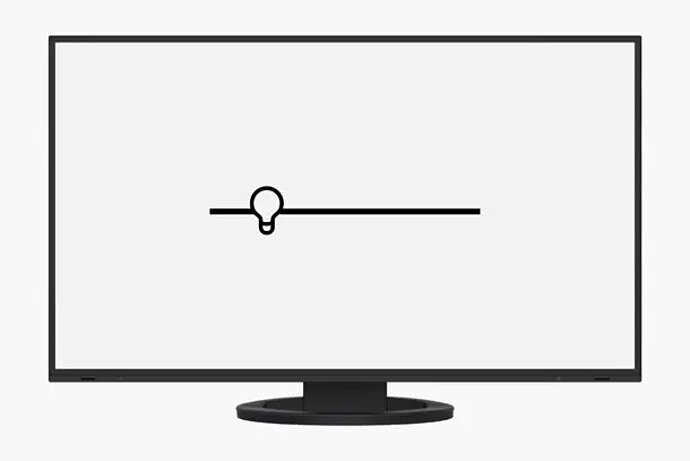
At low brightness, PWM dimming takes over at high frequency: this allows low brightness levels to be achieved without glare or flicker.

Flicker-free DC dimming dominates at high brightness levels: your eyes don't get tired so quickly.
Keep the focus
Anti-reflective coating: more image, less reflection
Insufficiently anti-glare monitors not only strain our eyes considerably, but also force us to sit in uncomfortable positions to avoid reflections as much as possible. This in turn tires the muscles, especially in the neck. On the other hand, if the anti-reflective coating is too strong, the contrast and sharpness of the monitor image can be impaired.
All EIZO FlexScan monitors have an effective anti-glare coating. Glare is prevented by scattering the reflections of incoming light. At the same time, we maintain a sharp, brilliant and high-contrast image display. This reduces eye fatigue and comfortable sitting positions can be adopted without having to adopt a "forced posture".

Eye training: the 20-20-20 rule
Prolonged staring at a screen can cause eye problems such as fatigue, dryness and strain. It is therefore important to train your eyes for long-term screen work. One way to do this is to follow the 20-20-20 rule: look at something 20 feet (approx. 6 meters) away for 20 seconds every 20 minutes. By focusing on a point further away, the eyes are relieved from the close focus on the screen and the eye muscles can relax.
IPS panel
Stable contrasts and high color fidelity

Thanks to a high contrast ratio, FlexScan monitors allow you to experience razor-sharp text contours, brilliant graphics and clear images - even with complex displays or fine details. This not only ensures impressive image quality, but also makes it easier to concentrate on your work over longer periods of time. The integrated IPS panel with LED backlight technology ensures consistently high color fidelity and stable contrasts - regardless of the angle from which you look at the screen. As a result, the display always remains clear and precise, which is easy on the eyes and effectively prevents fatigue caused by blurred or hazy images.
A sharp display for the eyes
Resolution and pixel density
An often underestimated factor in the development of eye fatigue is screen sharpness, which is directly dependent on the resolution and pixel density (ppi - pixels per inch) of a monitor. If the pixel density is too low, individual pixels become visible, resulting in a blurred display, which makes reading more difficult and puts considerable strain on the eyes. A high pixel density ensures razor-sharp display of text, symbols and images - this relieves strain on the eyes and improves readability.
Full HD (1920 × 1080 pixels) is still sufficiently sharp on smaller monitors (e.g. 22-24 inches) with a normal viewing distance. On larger displays (from 27 inches), however, Full HD often appears blurred or grainy as the pixel density decreases - this can lead to fatigue more quickly. WQHD (2560 × 1440) or 4K (3840 × 2160) offer a significantly higher pixel density on larger monitors - ideal for a razor-sharp display with more workspace.
EIZO offers monitors with a resolution that is perfectly matched to the screen size so that the pixel density is always in the ideal range - for a sharp, eye-friendly display, less visual strain and higher productivity when working with text, graphics or CAD.

Psychosocial aspects & workplace design
Eye fatigue is not only caused by technical factors, but also by psychosocial influences such as stress, mental exhaustion and a lack of breaks. Therefore, promote a culture of breaks by introducing fixed break intervals in the working day.
Also make your working environment stress-free by providing a quiet, ergonomically designed workplace with pleasant lighting. Height-adjustable monitors, for example, help to promote a natural posture and avoid neck tension by ensuring a correct monitor position.
Easy on the eyes at the touch of a button
Optimized color display
Preset color modes make everyday office work easier by adapting the screen display specifically to different tasks. Whether you are writing documents, watching a video or image, creating tables or researching on the Internet - the brightness, gamma value and color temperature can be optimally adjusted at the touch of a button.
An example: Paper mode simulates the pleasant contrast of printed paper. This makes reading on the screen more comfortable, protects the eyes and prevents fatigue - ideal for longer work sessions.
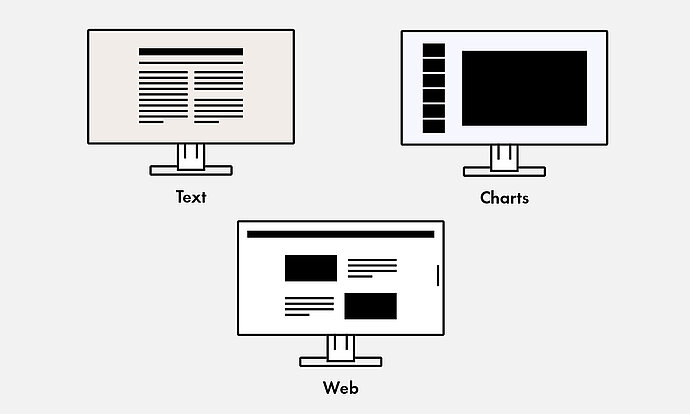
The environment makes the difference
PC workstation & room conditions
PC workstation
The right monitor is the be-all and end-all in preventing eye fatigue. EIZO monitors not only have the features described above, such as Auto EcoView, flicker-free display or anti-glare coating. It is also important to adjust the monitor individually to the user's needs and sitting position. If the angle or height of the monitor cannot be adjusted, the user adapts to the monitor, which leads to the aforementioned incorrect sitting positions and eye fatigue due to incorrect vision.
A gentle sitting position for the eyes and body is to set up the monitor so that the line of vision is directly forward or slightly downwards when looking at the screen. To prevent dry eyes, avoid tilting your head upwards to look at the screen.

Room conditions
Eye fatigue can be prevented by positioning the desk correctly. If possible, do not place the desk directly in front of a window. If the window is directly behind the monitor, the brightness gradient compared to the display is significantly too high during the day: this can result in eye fatigue or headaches. If, on the other hand, the window is at the employee's back, there are annoying reflections on the monitor - sometimes even with anti-glare monitors.
Ideally, the desk and monitor should be parallel to the window. Blinds or roller blinds can prevent additional glare at the workplace. There should also be sufficient and glare-free ceiling lighting, ideally with an illuminance of between 400 and 600 lux. Indirect, glare-free light reduces contrasts between the screen and the surroundings - ideal in combination with automatic brightness adjustment.
